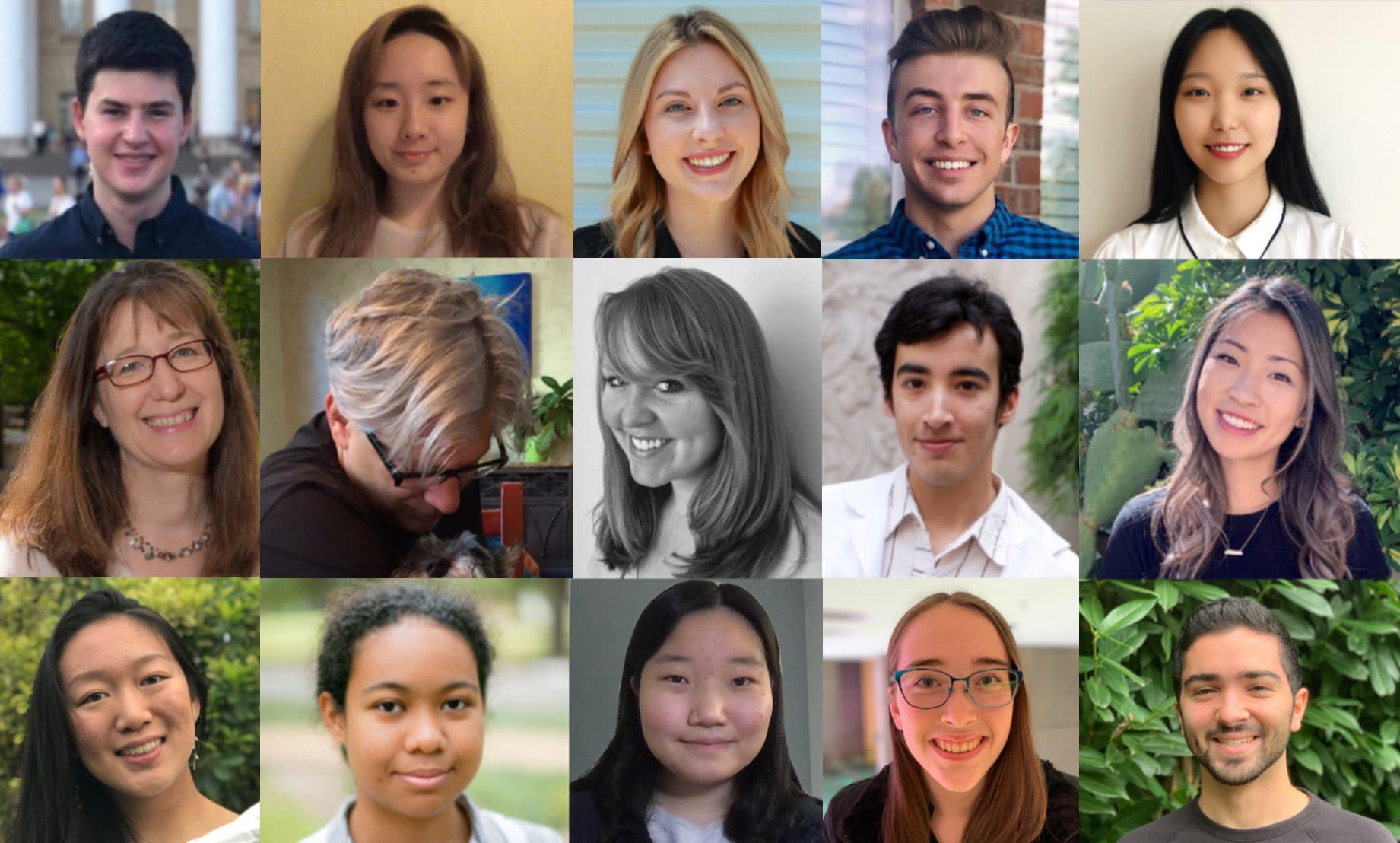COVID-19 environmental study in Nature Scientific Reports
Black and Hispanic communities bore disproportionate share of Texas’ early COVID-19 deaths
Rice University study features statewide analysis of mortality, air pollution, and assessment of disproportionate economic impacts in Harris County
Jade Boyd
713-348-6778
jadeboyd@rice.edu
HOUSTON – (Jan. 24, 2022) – Texas state officials did not publish the race and ages of COVID-19 victims in early 2020, but a county-level statistical analysis spearheaded by Rice University undergraduates in collaboration with university faculty has found deaths statewide were disproportionately concentrated in Black and Hispanic communities.
 In the study published online in Scientific Reports, researchers analyzed COVID-19 death and incidence data from the Texas Department of State Health Services and demographic data from the Census Bureau. They found county COVID-19 death rates through late July 2020 were strongly correlated with county percentages of Black and Hispanic populations.
In the study published online in Scientific Reports, researchers analyzed COVID-19 death and incidence data from the Texas Department of State Health Services and demographic data from the Census Bureau. They found county COVID-19 death rates through late July 2020 were strongly correlated with county percentages of Black and Hispanic populations.
Statistics on the age and race of COVID-19 victims were available for Harris County, and the researchers used that data to assess the disproportionate economic impacts of COVID-19 deaths on the county’s Black and Hispanic communities. Texas’ most populous county, Harris is home to both Rice and the city of Houston.
“We looked at census data for the age breakdowns per racial group in Harris County and then calculated what you would expect if COVID had impacted all communities equally,” said study lead author Annie Xu, a junior majoring in civil and environmental engineering. “The numbers showed Blacks and Hispanics experienced more losses than would be expected based on their age-specific shares of the population of Harris County, Asians experienced roughly what would be expected, and whites experienced fewer losses than would be expected.”
For example, about 45% of the county’s population is white, but white people bore just 24% of the economic burden of COVID-19 deaths. Hispanic people make up almost 33% of the county’s population and shouldered 45% of the losses from COVID-19 mortality. Black people fared worse. Though they account for slightly less 15% of the county’s population, they incurred almost a quarter of the economic burden from COVID-19-related deaths.
“The economic costs associated with COVID-19 mortality are large,” said Rice economist Ted Loch-Temzelides, a study co-author and the George and Cynthia Mitchell Chair in Sustainable Development. “Some of Houston’s most vulnerable communities have been experiencing a disproportionately high fraction of these losses.”
The researchers also looked for correlations between COVID-19 death rates and local levels of air pollution but found no statistically significant correlations at a countywide level.
“We found race and ethnicity was a better predictor of COVID-19 mortality in Texas than air quality,” said Rice climate scientist Sylvia Dee, the study’s corresponding author. “But that’s complicated, because we know race and ethnic minority populations are also disproportionately affected by worse air pollution.”
Dee, an assistant professor of Earth, environmental and planetary sciences, said previous studies have linked air pollution with worse health outcomes from COVID-19, upper respiratory infections, premature births and other medical conditions. She said a link between air pollution, race and COVID-19 infections or deaths likely exists but may be undetectable at the county level.
 “While we weren’t able to detect a signal with this dataset, I have no doubt that if we were able to work with a dataset that had ZIP code-level granularity, we would find some codependencies between air quality, race, ethnicity and COVID-19,” Dee said.
“While we weren’t able to detect a signal with this dataset, I have no doubt that if we were able to work with a dataset that had ZIP code-level granularity, we would find some codependencies between air quality, race, ethnicity and COVID-19,” Dee said.
The analysis was funded by Rice’s COVID-19 Research Fund. It is part of a larger project involving 10 undergraduates from Rice and Princeton University and five Rice faculty members who are evaluating specific questions about the pandemic’s impacts on environmental pollution and economic activity. Dee said additional papers from the group are in preparation, and she praised the undergraduate researchers, who presented the group’s findings at two major scientific conferences last year, including the American Geophysical Union’s annual fall meeting.
“This was a really big, interdisciplinary team project,” she said. “We had students from engineering, economics, Earth science and more, and the fact that they were able to produce these kinds of results and present their work at national conferences is a testament to their drive and level of expertise.”
Xu said working on the project has spurred her interest in data science.
“I thought statistics was pretty dry before starting this project,” Xu said. “Realizing that it can be so helpful in studying environmental justice, in particular, really speaks to me. I have engaged in a data science internship since, and enjoy taking part in student-led data science activities on campus.”
Additional co-authors include Rice undergraduates Chima Adiole and Mitchell Osborn, Princeton undergraduate Nathan Botton and Rice faculty members Caroline Masiello, Mark Torres and Daniel Cohan. Other members of the undergraduate research team include Samantha Breaux, Melinda Ding, Benjamin Gelman, Lingkun Guo, Jiaqi Lu, Sarah Preston (Click on Sarah’s name to read her article on this project in the most recent issue of Outcroppings- pp. 68-71), and Joanne Zhou.
-30-
DOI: 10.1038/s41598-021-04507-x
The paper, “Race and ethnic minority, local pollution, and COVID‐19 deaths in Texas,” is available at https://doi.org/10.1038/s41598-021-04507-x.
High-resolution IMAGES are available for download at:
https://news-network.rice.edu/news/files/2022/01/0120_COVIDTX-grp-lg.jpg
CAPTION: A county-level statistical analysis spearheaded by Rice University undergraduates has found that COVID-19 deaths in Texas in the first half of 2020 were disproportionately concentrated in Black and Hispanic communities. The research team includes, from left to right, (top row) Princeton University undergraduate Benjamin Gelman, Rice undergraduates Joanne Zhou, Samantha Breaux, Mitchell Osborn and Jiaqi Lu, (middle row) Rice faculty Carrie Masiello, Ted Loch-Temzelides, Sylvia Dee and Mark Torres, Rice undergraduates Melinda Ding, (bottom row) Annie Xu, Chima Adiole, Lingkun Guo and Sarah Preston, and Princeton undergraduate Nathan Botton. (Photo courtesy of Annie Xu)
https://news-network.rice.edu/news/files/2022/01/0120_COVIDTX-ax-lg.jpg
CAPTION: Annie Xu (Photo courtesy of Annie Xu)
This release can be found online at news.rice.edu.




Leave a Reply
Want to join the discussion?Feel free to contribute!